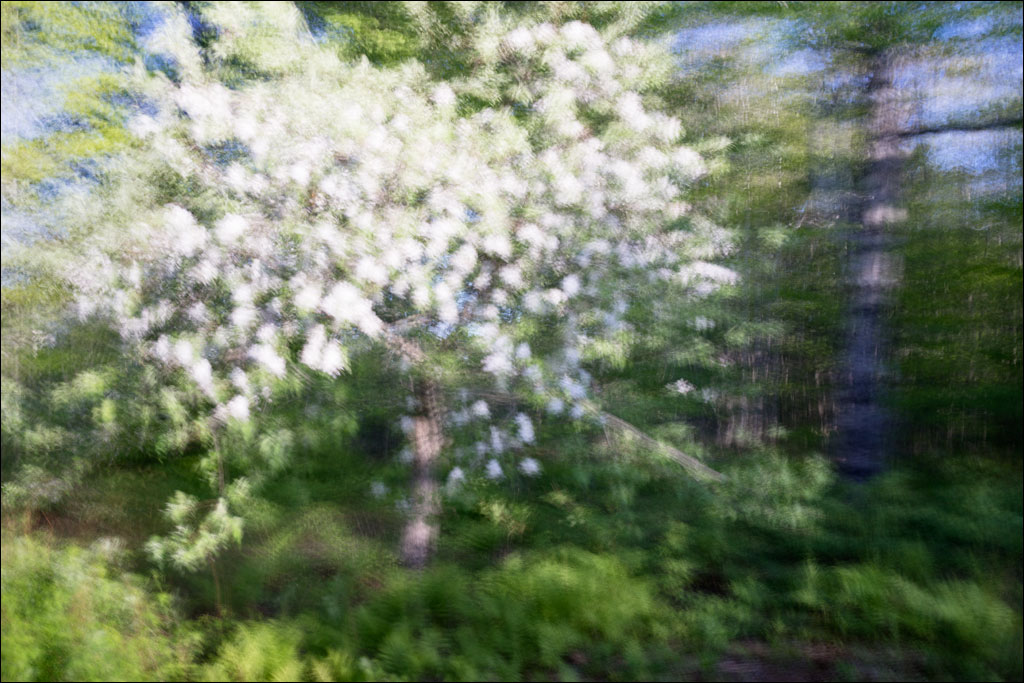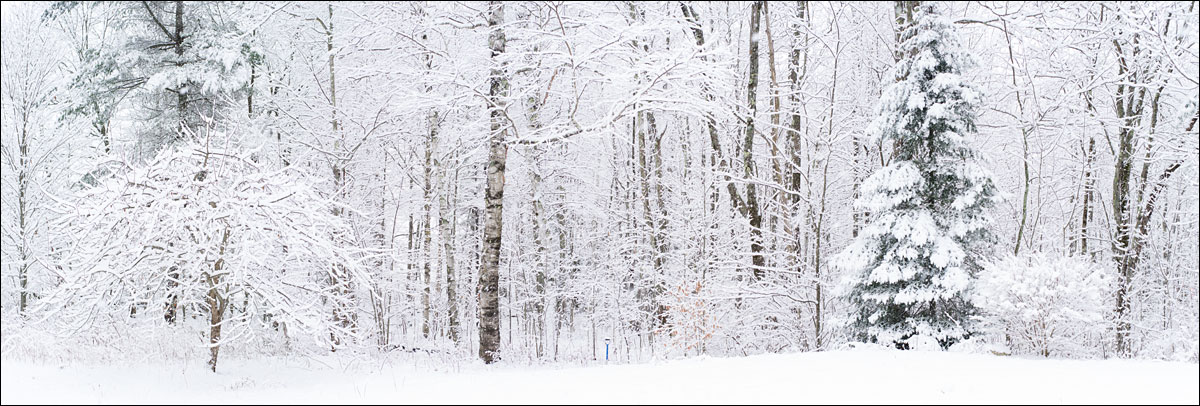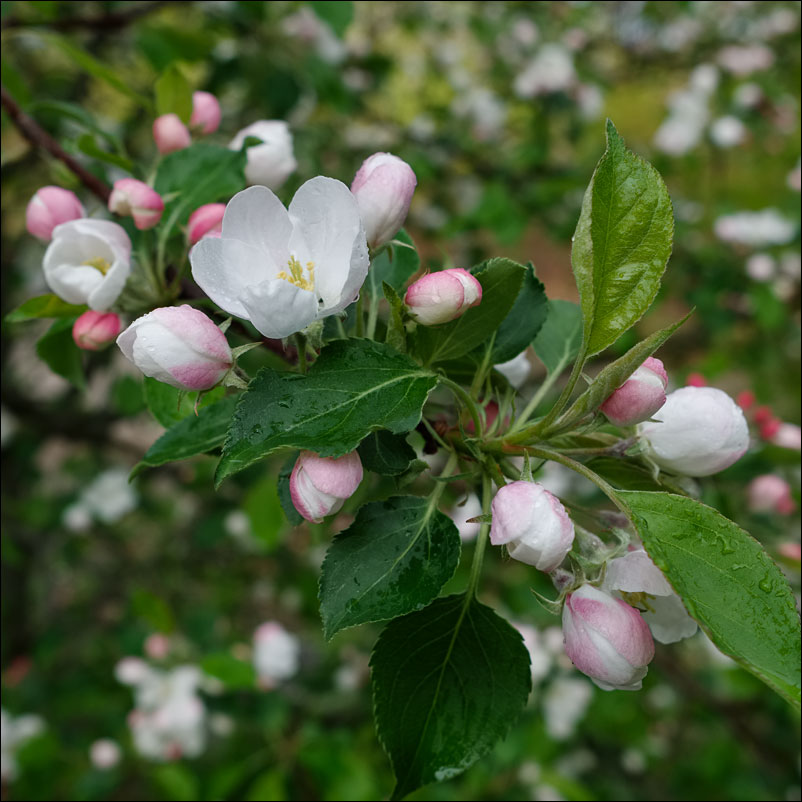 Spring is such an amazing time of year. We have had months of a dry, brown landscape, and then, within a matter of weeks, the landscape transforms. After two days of rain, there was a break in the weather this evening. I went out to see our sweet crab apple tree. Not only do we enjoy its magnificent spring display, in the late summer, we can also harvest its fruit. Click on the image for a larger view.
Spring is such an amazing time of year. We have had months of a dry, brown landscape, and then, within a matter of weeks, the landscape transforms. After two days of rain, there was a break in the weather this evening. I went out to see our sweet crab apple tree. Not only do we enjoy its magnificent spring display, in the late summer, we can also harvest its fruit. Click on the image for a larger view.
Tag Archives: Apples
Apples in Bloom
 Our apple trees are in bloom. We have several varieties, but the blossoms are surprisingly similar—the foliage has greater variety. These particular blossoms are on a tree we call Midori-chan. Click on the image for a larger view.
Our apple trees are in bloom. We have several varieties, but the blossoms are surprisingly similar—the foliage has greater variety. These particular blossoms are on a tree we call Midori-chan. Click on the image for a larger view.
Giving Thanks
We wish everyone a happy Thanksgiving.
 Today is Thanksgiving in the US. Like many people, we are celebrating the holiday with a meal. We have been using foods we have harvested from our garden. Two dishes I am really looking forward to are an apple pie with cranberries and a blackberry pie. The apples are from our tree of an unknown variety. The blackberries are from our field. Click on the image for a larger view.
Today is Thanksgiving in the US. Like many people, we are celebrating the holiday with a meal. We have been using foods we have harvested from our garden. Two dishes I am really looking forward to are an apple pie with cranberries and a blackberry pie. The apples are from our tree of an unknown variety. The blackberries are from our field. Click on the image for a larger view.
Lost Varieties—Apples of Maine
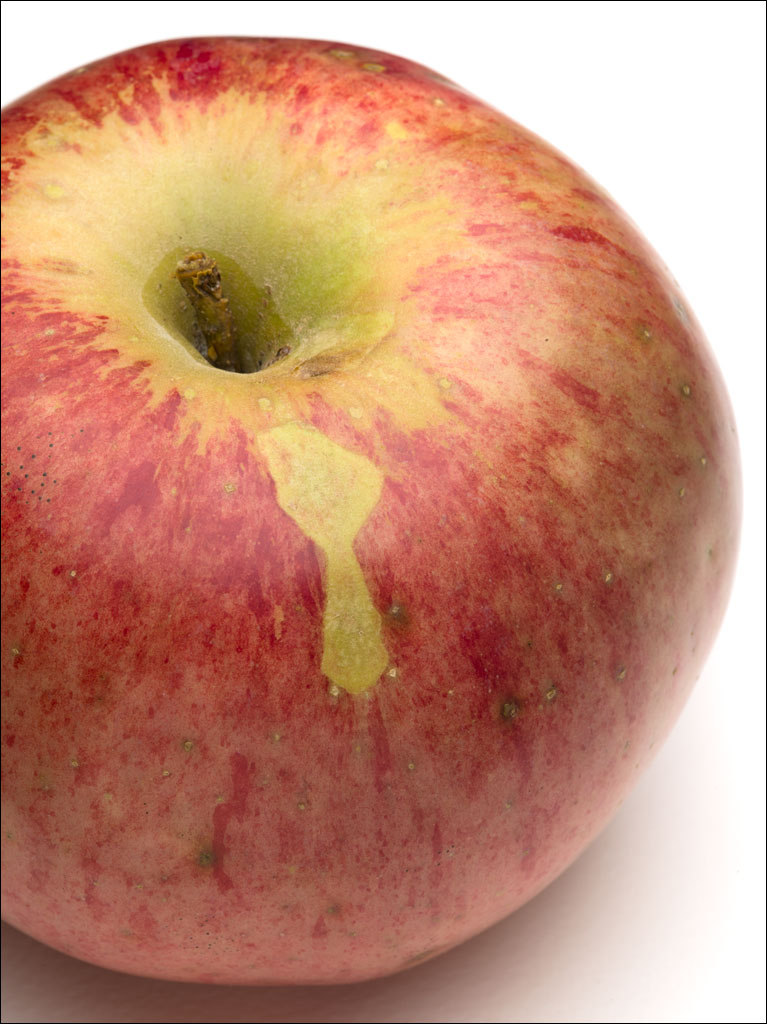 Throughout Maine are lost varieties of apples growing in old fields. While our supermarkets limit our choice, usually red, yellow, and green, thousands of apple varieties have been cultivated. Some have been saved in seed banks and specialty orchards, but many have been lost to time and memory—it can be hard to identify an apple by appearance.
Throughout Maine are lost varieties of apples growing in old fields. While our supermarkets limit our choice, usually red, yellow, and green, thousands of apple varieties have been cultivated. Some have been saved in seed banks and specialty orchards, but many have been lost to time and memory—it can be hard to identify an apple by appearance.
We have one lost variety on our land. It fruits biennially and produces large, round apples. The flesh is white and very light; despite the size, they do not weight that much. It is not a sweet apple, but neither does it have a sharpness of a Granny Smith. Lemony would be a good description. If you cook it, it takes on a pleasant sweetness, but it does not retain its shape. We eat this raw or make apple sauce for itself or as pie filler. Click on the image for a larger view.
Apple Harvest
 It is turning out to be a great year for apples. And not just for us—apple trees, abandoned and cultivated, are full of fruit around Maine. We use no pesticides on our trees and so our apples are not as pretty as the fruit you find in the supermarket. The only thing we do to protect the crop is to spray it with a fine clay called Surround.
It is turning out to be a great year for apples. And not just for us—apple trees, abandoned and cultivated, are full of fruit around Maine. We use no pesticides on our trees and so our apples are not as pretty as the fruit you find in the supermarket. The only thing we do to protect the crop is to spray it with a fine clay called Surround.
The green apples seem to be a Granny Smith variety, although it does not have the tartness of a Granny Smith. We usually only get a couple of fruit from this tree, but this year we may have harvested a half a bushel. The red apple is an unknown variety that is biennial. It is a little early to eat; most of the fruit is still on the tree ripening. Click on the image for a larger view.
Sweet Crab Harvest
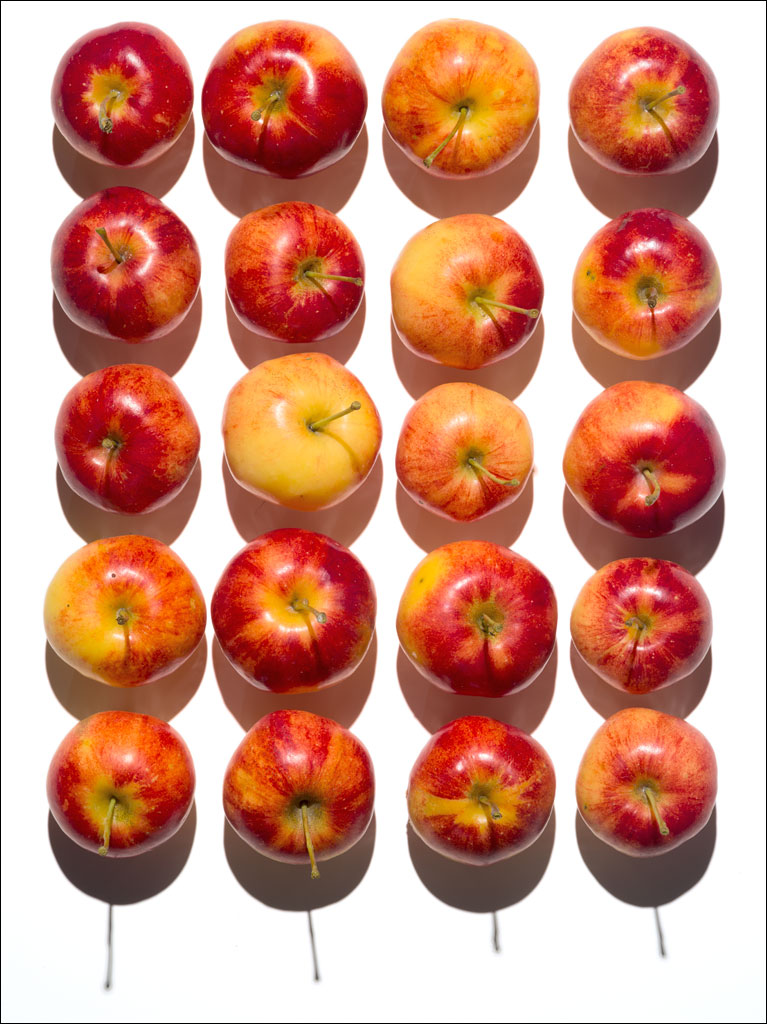 We had a great harvest of our Sweet Crab Apples this year. We have found this to be a great apple to have. While they are tart eaten fresh, once cooked, they have a wonderful sweetness to them. We dry some and turn some into sauce. Click on the image for a larger view.
We had a great harvest of our Sweet Crab Apples this year. We have found this to be a great apple to have. While they are tart eaten fresh, once cooked, they have a wonderful sweetness to them. We dry some and turn some into sauce. Click on the image for a larger view.
Riot of Spring
Winter Forest Panorama
Natural Birdfeeder
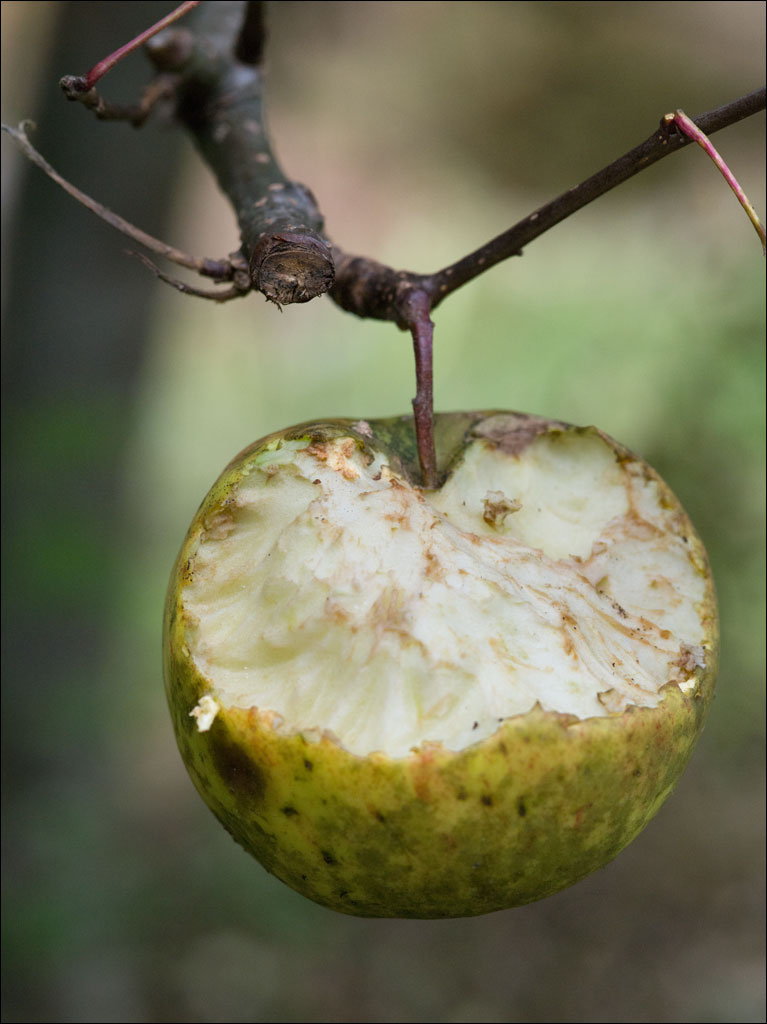 This apple was left on the tree we call Midori. While the current philosophy in gardening seems to be centered around getting everything for the human residents, taking a rather dim view of the others sharing the space, Naomi and I believe our garden has a communal function. Click on the image for a larger view,
This apple was left on the tree we call Midori. While the current philosophy in gardening seems to be centered around getting everything for the human residents, taking a rather dim view of the others sharing the space, Naomi and I believe our garden has a communal function. Click on the image for a larger view,
Organic Apples
 Growing apples organically do not result in the prettiest fruit. Certainly you can lose apples to pests and disease. But it is possible. This apple is from a tree we named Midori, the Japanese word for green. We are uncertain of the variety as we did not plant it. The flesh is soft, a pale green, and slightly sweet. There are many unidentified apple trees throughout Maine. Some bear some fine apples, other do not. But these lost varieties can be more resistant to pests and disease. Click on the image for a larger view.
Growing apples organically do not result in the prettiest fruit. Certainly you can lose apples to pests and disease. But it is possible. This apple is from a tree we named Midori, the Japanese word for green. We are uncertain of the variety as we did not plant it. The flesh is soft, a pale green, and slightly sweet. There are many unidentified apple trees throughout Maine. Some bear some fine apples, other do not. But these lost varieties can be more resistant to pests and disease. Click on the image for a larger view.

